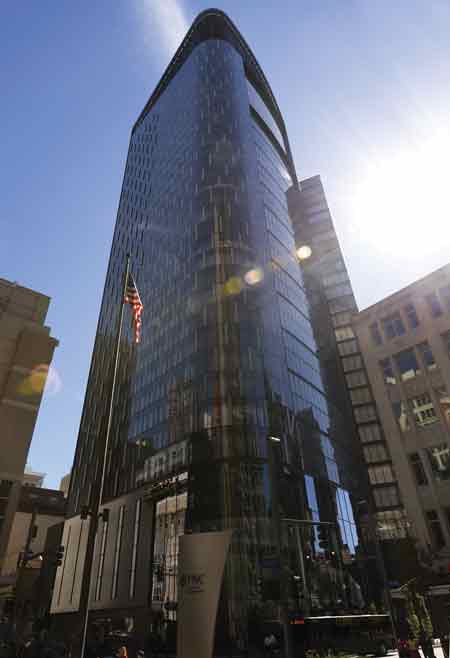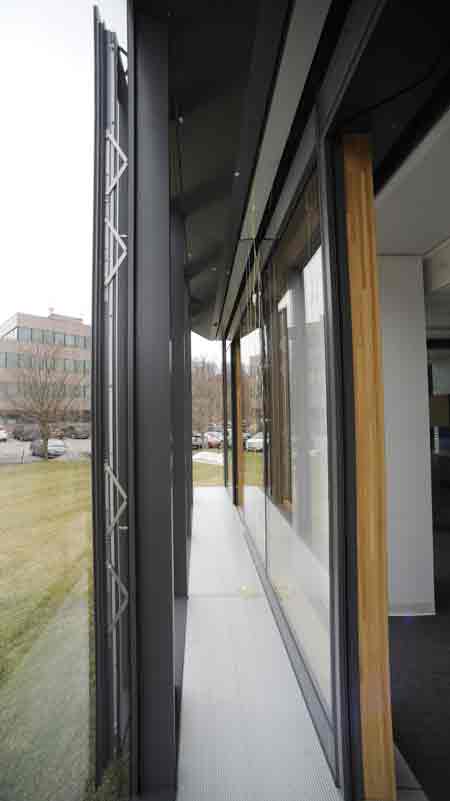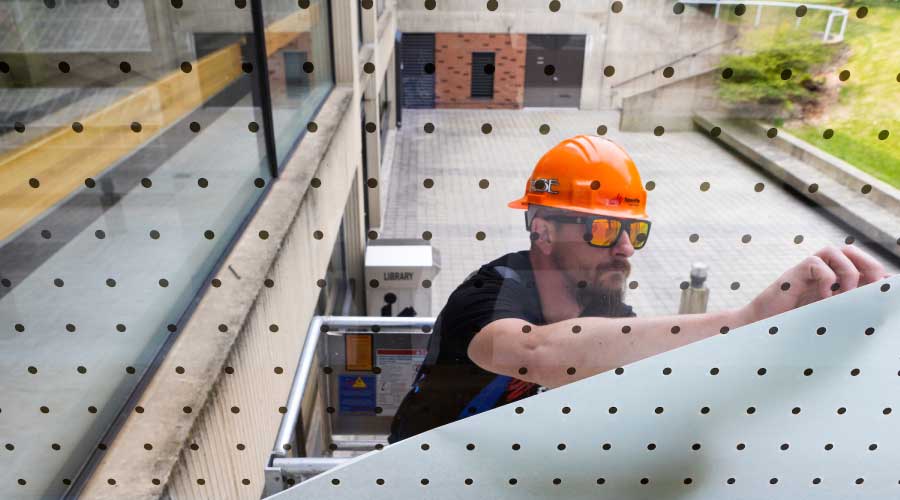 The Tower at PNC Plaza has a double-skin façade. The exterior wall also features glass air gates that open to allow outside air to enter the cavity when conditions are right. Photos courtesy of PNC Financial Services Group
The Tower at PNC Plaza has a double-skin façade. The exterior wall also features glass air gates that open to allow outside air to enter the cavity when conditions are right. Photos courtesy of PNC Financial Services Group3 More Ways to Boost Building Envelope Performance
Double-skin facades, rainwater harvesting, and thin-film photovoltaics can bring huge energy savings.
4. Double-skin façade
One of the design strategies drawing interest today is the double-skin façade. In double-skin façade construction, the building has two separate skins, both typically glass, separated by an air chamber. The inner layer of glass is typically insulating glass. The cavity between the skins increases the insulating value of the skin and reduces sound transmission to the building.
To improve the building’s energy efficiency, the cavity between the glazings is ventilated naturally or mechanically. During the heating season, air from the cavity can be used to help heat the facility. During the cooling season, heated air in the cavity is vented to the exterior, reducing the building’s cooling load.
In addition to improving energy efficiency, double-skin façades offer the advantage of improved occupant comfort. Operable windows allow occupants to make use of the natural ventilation between the glazings. There are issues to be solved yet, including how to deal with condensation and dirt on the cavity side of the glazings. And the additional skin results in a significant increase in construction costs.

PNC Plaza’s double-skin facade was tested in a 1,200-square-foot-mockup. The 30-inch cavity between the double walls of the façade insulates against heat loss in winter and heat gain in summer.
5. Rainwater harvesting
Rainwater has always posed a problem for owners of buildings with large roof areas. It must be trapped and directed away from the building, generally ending up in the area’s stormwater system. Rainwater harvesting offers an effective way to reduce a facility’s demand for potable water while cutting the facility’s runoff. By harvesting rainwater and using it for irrigation, flushing of toilets, vehicle washing, and other activities where potable water is not required, some facilities can reduce total water use as much as 50 percent.
Unlike the systems that many homeowners have installed, commercial building rainwater harvesting systems do more than just direct collected rainwater into a storage tank. Collection points on roofs include a coarse filter to prevent leaves and other debris from entering the system piping. A variety of different filtration systems — including sand filters, horizontal roughing filters, charcoal water filters, and slow sand filters — are used to remove the finer debris from the water. In larger systems, a collection tank may be installed prior to the filtration system to prevent the system from being overloaded during periods of heavy rain. After filtration, water is typically stored in underground concrete, plastic, or concrete tanks. A pump and distribution system then moves the water to where it is needed.
6. Thin-film photovoltaics
Another long dreamed of glazing is one that serves a dual purpose of allowing light to enter the building while generating electricity. While coatings can reduce energy use by limiting solar transmission into the building, this type of glazing would also allow buildings to harvest solar energy. What is making this possible is the development of thin-film photovoltaics. Applied directly to glass, the thin-films are almost invisible, looking just like a regular window but also serving as a system to harvest solar energy.
Early generations of the cells proved to be fairly efficient but required the use of toxic materials in their manufacture. Recent advances in cell construction have increased the efficiency of the solar cells. Changes in manufacturing techniques are expected to make the process more environmentally friendly and lower their cost. It is not quite ready for prime time, but advances are taking place rapidly. Once that happens, the architectural appeal of buildings with large areas of glass may be seconded by their energy efficiency appeal.
James Piper, PhD, PE, is a writer and consultant who has more than 35 years of experience in facilities management. He is a contributing editor for Building Operating Management.
Email comments and questions to edward.sullivan@tradepress.com.
Related Topics:













